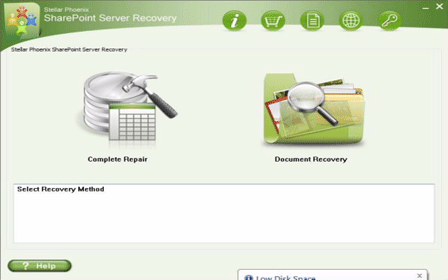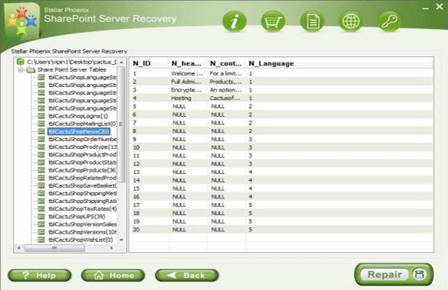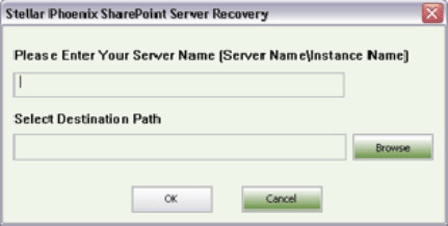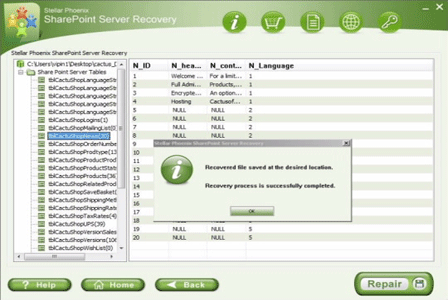How to Fix SharePoint Event ID Error 5586File Repair Tool Blog
MS SharePoint makes use of Server database for storing configuration settings and most of website content. All pages in website, document library file, files adjoined to list, and details in list are amassed in database content, and even configuration and permission settings are accumulated in configuration database.
A service is being used by MS database for the purpose of communication when requested by a user. This account could be either a specific password or user name or could be a predefined system account, like limited system or network service. When a Server database is shaped a value for maximum database size is set. Every database has separate size setting and one of those might also be associated with Web application.
Symptoms of 5586
This error emerge in the event record
Event ID: 5586 Description full error on SQL Server instance .
Supplementary information regarding error from SQL server is involved beneath which includes possible causes leading to this error along with the appropriate resolution.
WHY error 5586 Event ID occurs?
- Inadequate permission of SQL server database
- Server database of SQL is compact
- Erroneous MDAC version
- SQL Server Database not found
- SQL server version is incorrect
- Collation of SQL server is not supported
- Database is set to read-only
NOTE: You must be a member of the SharePoint Administrators group to perform this task.
Resolution to Solve 5586 Error:
 In order to get rid of this error the most important thing is to be completely aware of the cause because if you are aware of the reason you will be able to diagnose it properly.
In order to get rid of this error the most important thing is to be completely aware of the cause because if you are aware of the reason you will be able to diagnose it properly.
Therefore separate solution has been provided below for every possible cause that can lead to Event ID error 5586.
Cause 1: Inadequate permission of SQL server database
Solution: To solve this issue allocate database access account and then authenticate that account has correct authorization in SQL server. And to accomplish this task do as follows;
- Click Security, and then in General Security go to Configure Service Accounts on the Central Administration Website of SharePoint.
- Opt for the appropriate Web application pool in Credential Management on the account page of Configure Service.
- In the segment of account selection, pick the domain account that you desire to correlate with application pool of Web, or hit Register New Account in order to adjoin a fresh domain name along with the application pool.
- Once it’s done click OK for the changes to take effect.
Confirm that account has accurate permission
- Login as Administrator on PC from SQL is being accessed.
- In Studio of SQL Management, go to Object Explorer Navigation Pane and enlarge the Security node and then the Login
- If the account survives then click Roles after expanding the Database and Security
- After expanding Database Roles, right click on db_owner and choose Properties.
- In the Roles Properties of Database check whether role list members includes access account or not. If not the hit Add and list it.
Cause 2: Server database of SQL is compact
Solution: If a database has reached its utmost size then SharePoint foundation won’t be able to write in it. Therefore to solve this issue you can augment the maximum size setting for database to be occupied, that’s named in message of event. In order to enhance the size of database;
- Click on Properties by expanding the server and database node in Studio of SQL Server Management that you can find in the Object Explorer steering pane.
- Click on Files in the dialog box of Properties.
- Into the Autogrowth column, in the files of Database, hit the ellipses.
- Under the Autogrowth Column, in the Maximum File Size, if the Restricted File Growth option is preferred, amplify utmost file from the box in the right side of it. Also you can opt for Unrestricted Growth Option.
- Now press OK for the changes to be implemented.
Cause 3: Erroneous MDAC version
Solution: MDAC stands for Microsoft Data Access Components. If your version is outdated then have get the latest version installed. Although the lowest required version is 2.8.1022.0 that you can get from Download Center of Microsoft.
Cause 4: SQL Server Database not found
Solution: If the SQL server is inaccessible or not present on PC, then reinstate database using the back-up and rejoin it to SharePoint Foundation.
For restoring database using back-up:
For reconnecting database in Central Administration
- Go to Manage Content Database, by clicking Database segment into the Application Management.
- On the page of Manage Content Database, pick web application after hitting Add a Content Database.
- In the sector of Verification and Database Name, insert server name in text box of Database Server and name in text box of Database Name.
- Click OK for the alterations to take action.
Cause 5: SQL server version is incorrect
Solution: The system that hosts the function of server database must comprise of SQL Server Pack 3, Cumulative update 3 or SQL Server 2008 Service Pack 1 cumulative update 2 installed. Either install or upgrade to the most suitable version of SQL Server.
Cause 6: Collation of SQL server is not supported
Solution: All you have to do is to opt for the most appropriate SQL Server collation
Switch on the system on which the SQL server is being admitted by making use of db_owner agreement.
Again go to Server Mgt. Studio, and then Object Explorer and Expand Database node. Then click on the specific database that was indicated in 4972 event and move to its Properties.
Collation is listed on Maintenance part of General tab.
Access the Options page to alter the collation.
Make selection of the correct collation from the Box of Collation.
Cause 7: Database is set to read-only
Solution: Modify the database so that it can act for both read-write operations by enlarging the database size. To increase the size of the database:
- Inflate Server and Database node from Object Explorer Navigation Pane using Studio of SQL Server Management.
- Go to your desired database and switch to its Properties. Event message will display you the name of database.
- Click Files from the navigation pane of dialog box Database Properties.
- Now hit ellipses, in Autogrowth column from Database Files Segment.
- Transform Autogrowth Dialog box from fragment of Maximum file Size if the restricted file growth option is opted. Use the right box to increase the file size to utmost capacity or make use of Unrestricted File Growth
- Press OK to for saving changes.
Hopefully the solution provided above will be helpful for you to get rid of any sort of error in relation to SharePoint Event ID 5586.
Fully Automated Solution to solve event id error 5586:
 But if above provided solution do not help you to get rid of the issue, then the best available solution for this purpose is to apply third party repair tool. SharePoint Database Repair Tool is best tool for this function that’s professionally designed for solving any error associated with SharePoint. It comes with advanced algorithm that scans your entire SharePoint objects and helps you in fixing the errors and corruption.
But if above provided solution do not help you to get rid of the issue, then the best available solution for this purpose is to apply third party repair tool. SharePoint Database Repair Tool is best tool for this function that’s professionally designed for solving any error associated with SharePoint. It comes with advanced algorithm that scans your entire SharePoint objects and helps you in fixing the errors and corruption.



Steps to repair SharePoint Database:
- Firstly launch the SharePoint Recovery Tool you would find an interface. Opt for either ‘Complete Repair’ or ‘Document Recovery’.

- With ‘Complete Repair’, screen shows options to select and find SQL Server (.MDF) files. Use search file option if you don’t know actual path of database. Now start scanning.
- Tree of all SharePoint database tables will be demonstrated in left pane. Sample will be in right pane. Now ‘Repair’ to inaugurate repairing for preferred database.

- Then stipulate SQL Server name or Instance name and chosen target path and hit ‘OK’ button.

- After completion, a message will be displayed like ‘Recovered file saved at the desired location’. Now hit ‘OK’ button.

- Another dialog will ask you to tie repaired database to web application. Click ‘Yes’ button, for exceeding dialog box to come into sight. Insert corrupt database and SQL Server Instance name in the URL box. Continue by pressing ‘OK’. When it’s done, repaired database will be available.

